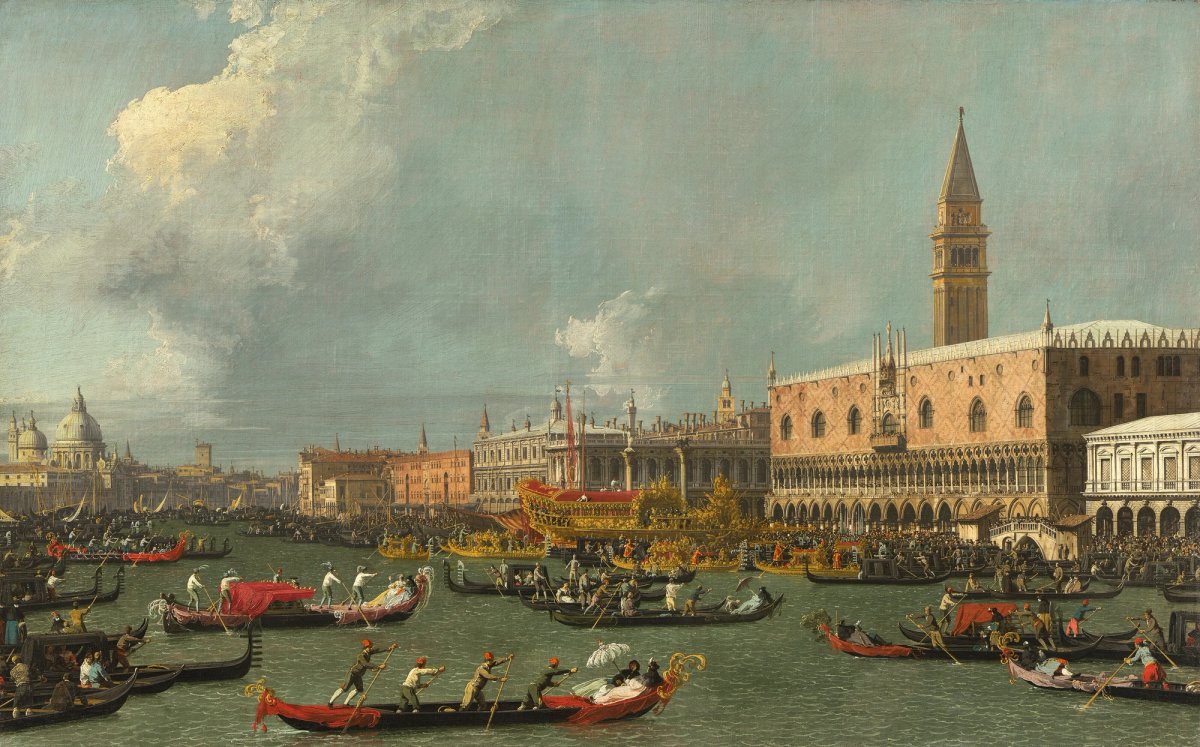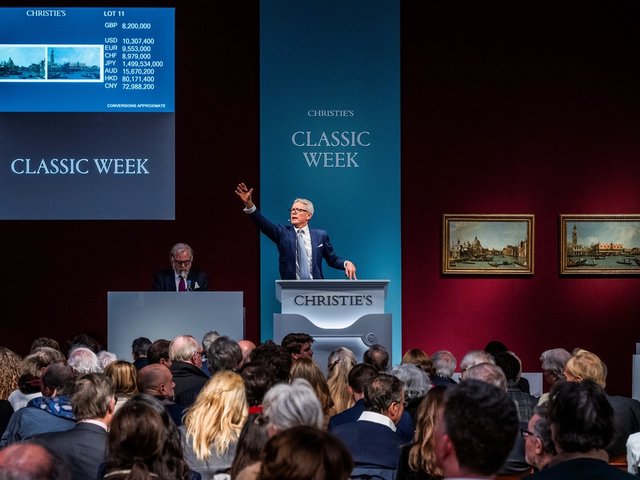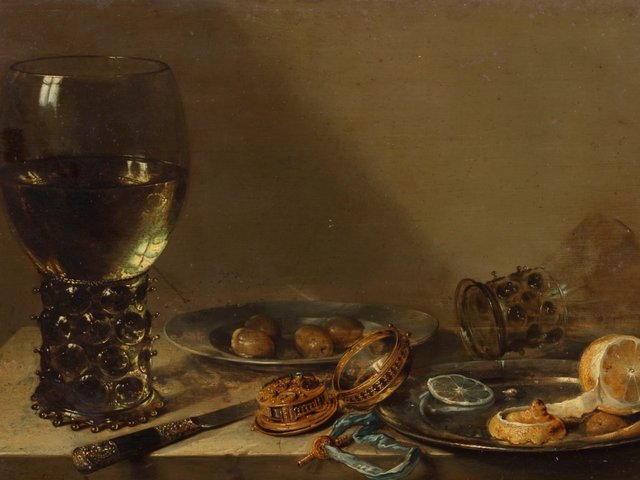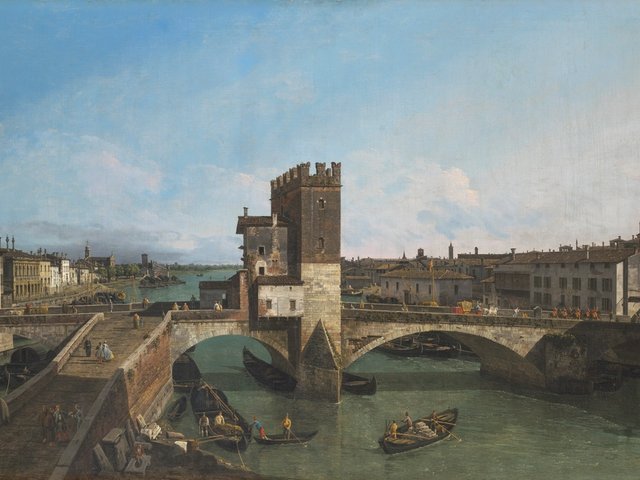A view of Venice by Canaletto has just set a new auction record for the artist, selling for £27.5m (£31.9m with fees) at Christie’s in London.
Venice, the Return of the Bucintoro on Ascension Day (around 1732), which was once owned by Britain’s first prime minister, Robert Walpole, had been estimated to sell for in excess of $20m in the Old Masters evening sale on Tuesday (1 July).
Watched by a packed room, the painting—which at 86cm by 138cm is bigger than any other important Canalettos to come on the open market in the past 20 years—sold to an anonymous bidder on the phone with Alice de Roquemaurel, Christie's international director and head of private sales for post war and contemporary
“We had five bidders on the Canaletto, from Asia, Europe and North America," Andrew Fletcher, Christie’s global head of the Old Master department, told The Art Newspaper following the sale. "It is fabulous, to have five bidders above £20m on a lot like this… but when you have a painting like this, it’s a question of how many bidders, not whether you’ll get any bidders." Fletcher adds that the buyer of the painting collects across categories.
In the run-up to tonight’s auction, the façade of Christie’s King Street headquarters had been clad with a huge reproduction of the painting. Initially covered by a house guarantee, by the time of tonight’s sale it was backed by a third-party guarantor, one of several to approach the auction house.
Prime provenance
Venice, the Return of the Bucintoro on Ascension Day was last sold at the Paris auction house Ader Tajan in 1993, for 66m French francs (£7.5m). That was the first time it had appeared at auction in over 250 years. It set a record for an Old Master painting sold at auction in France and was bought by the collector who has owned it until now.
The 1993 consignor later sold the work's pendant, Grand Canal from Palazzo Balbi to the Rialto, at Sotheby's in London in July 2005, where it made £18.6m (with fees)—which, until tonight, was the record auction price for a Canaletto.
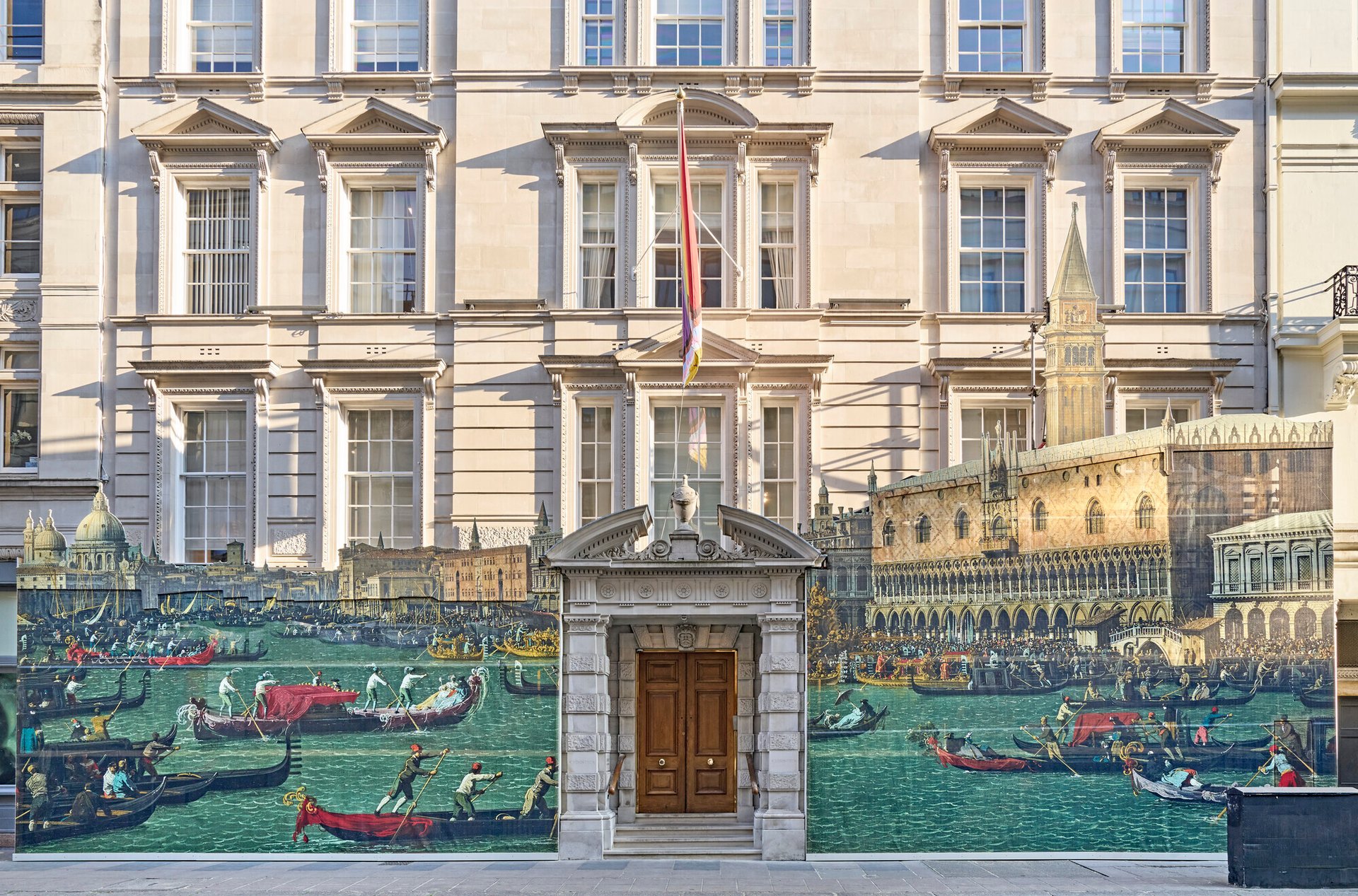
Christie's London headquarters was clad in a reproduction of the painting in June Courtesy Christie's Images Ltd
Back in 1993, the painting’s connection to Walpole was not known. It was the art historian Oliver Millar (1923-2007) who discovered that both works once hung in the parlour of 10 Downing Street, thanks to a reference in a 1736 manuscript catalogue of paintings held at the residence, where Walpole lived from 1735 to 1742. The paintings are also mentioned in the 1751 auction catalogue from when Walpole’s son, George Walpole, sold the pair at Langford's in London for £34.13. They subsequently passed through various private collections in England before alighting in Paris in the 1960s.
It is not known when or how Walpole bought the painting and its pendant, but it is likely to have been through connections made by his son Edward when he was sent to Venice in 1730 to 1731 to buy paintings for Downing Street.
Speaking before the sale, Fletcher told The Art Newspaper that the Ascension Day scene is, in his opinion, the best Canaletto in private hands. Its appeal is multi-faceted, Fletcher said: “One, the date of execution—the early 1730s are acknowledged as Canaletto’s finest period, and this one is from 1731-32. In terms of the level of skill, there is not a better moment in his entire output. Two, the view—I would say there’s no more famous view of Venice than the Molo from the Bacino di San Marco, with all the great sights of Venice from the Doge’s Palace to the Bridge of Sighs, the Campanile, the Salute. Three, it depicts Ascension Day, so you’ve got the Bucintoro on its annual outing anchored in front of the Piazetta, and all the hustle and bustle of the festival. Four, it’s in unimpeachable condition. And five, the provenance—Walpole was not only the first prime minister, but he also built one of the greatest collections of art ever formed.”
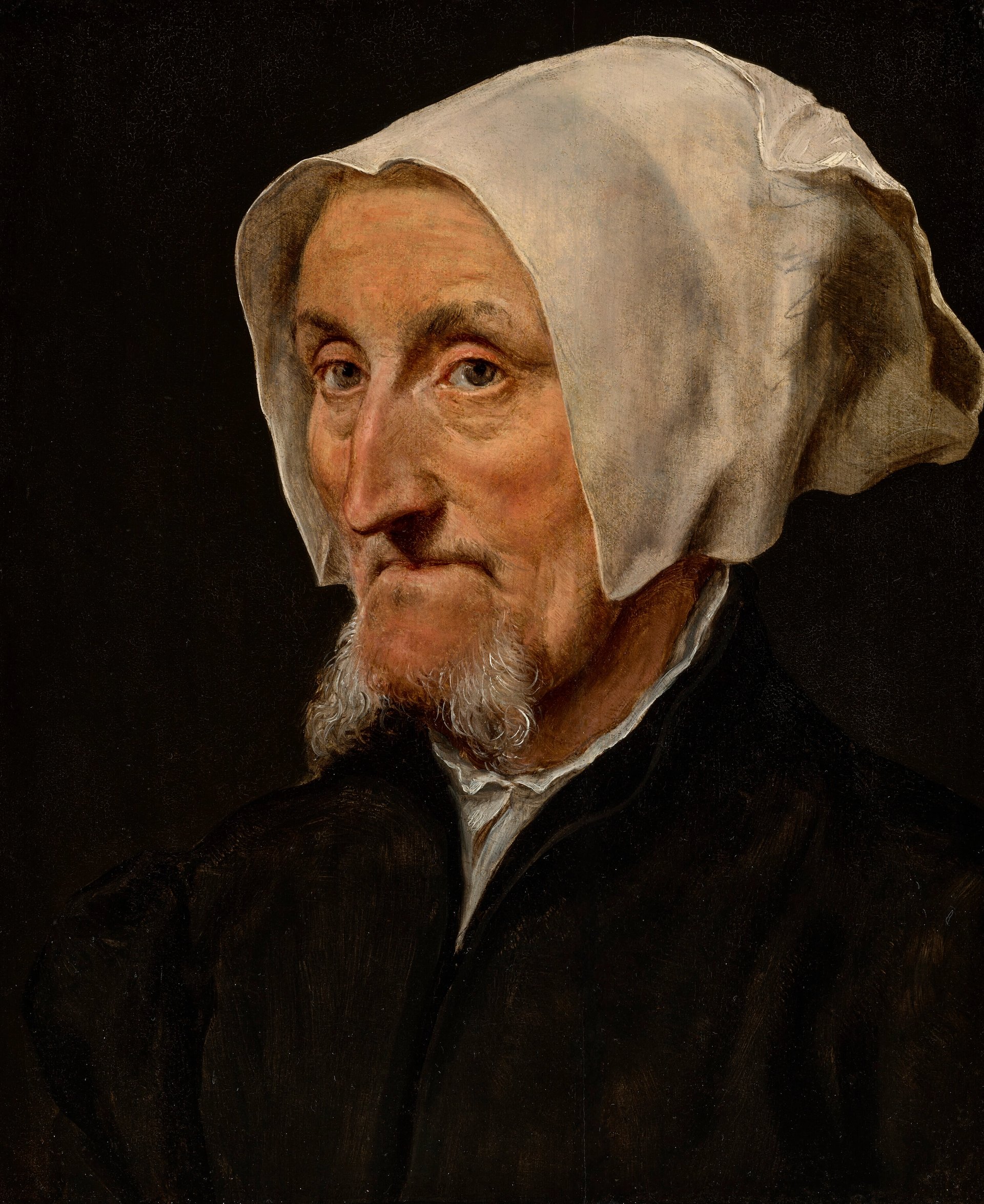
Willem Key, Portrait of Margret Halseber of Basel, also known as The Lady with the two beards
Courtesy Christie's
Bearded lady and de-nitting prove popular
At 99%, the sale posted the highest sell through rate by value ever achieved by an Old Master auction at Christie's London, totalling £46.2m (£55.2m with fees) from 39 lots offered, 34 of which (87%) sold, with three lots withdrawn. Ten works were backed by a third-party guarantor, and two by Christie's. Helped in large part by the Canaletto, the auction was a marked improvement on last year's equivalent sale, in which 24 lots sold for £43.6m (with fees).
The upbeat mood was a refreshing change in a generally flat art market. “It was heaving, and it was hot, and it felt like a good old-fashioned, classic summer auction, full of energy," Fletcher tells TAN. "In the past few years, with these evening sales, we’ve tried to find something really special. I think in Old Masters, we’re pretty good at finding those lots which create excitement. Granted we have 600 years to choose from! It’s important, not just for us in Old Masters, but for the market in general, to have these lots that create that buzz—it reenergises."
Twenty years ago, these Old Master evening sales were dominated by Dutch landscapes and still lifes and Italian Baroque works. But today, Fetcher says, "we try to put together sales with much more variety, with one off lots like the Willem Key that the market seems to want more than ever—The Lady with the Two Beards, even the title is enough to interest people, without even seeing it. It's the sort of painting that so many people are attracted to today."
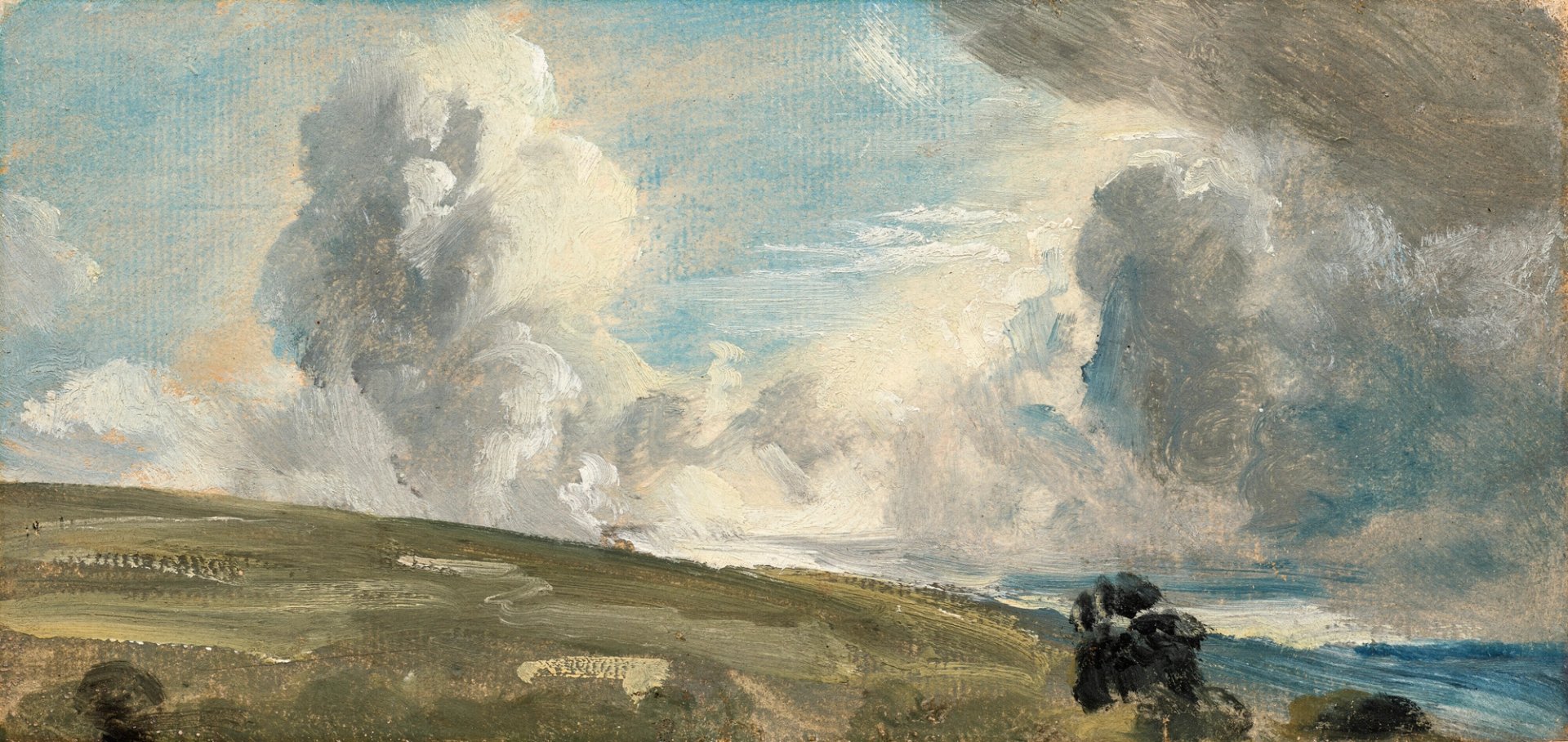
John Constable, Cloud Study, possibly over Harnham Ridge
Courtesy Christie's
He is referring to Key's 16th-century Portrait of Margret Halseber of Basel, also known as "The Lady with the two beards", which depicts a woman about whom little is known, but who may have had a condition called hirsutism, caused by a hormone imbalance whereby too much testosterone results in excessive hair growing on the face, chest and back. The painting was one of four works in the sale owned by the American Mickey Cartin—a cross-over collector before that phrase was even coined. Competed by multiple bidders, the painting, which was exhibited at David Zwirner in 2021 along with others from the Cartin collection, sold to a phone bidder with Joshua Glazer, head of private sales for Old Masters in New York, for £700,000 (£882,000 with fees), above an estimate of £300,000 to £500,000.
"It's a reflection of Mickey's collection—he was one of the first, really, to build a collection without any time period barriers, from the 16th century to the contemporary," Fletcher says. "He's an example that many collectors, without really knowing it, are following today."
Also offered from Cartin's collection last night was a monumentally proportioned 17th-century painting of a hound by the Italian painter Michele Pace, which made £250,000 (£315,000 with fees); Peder Balke's Fra Nordkapp (From the North Cape), which sold under its £200,000 to £300,000 estimate at £120,000 (£151,200 with fees), and a self-portrait by Vilhelm Hammershoi (est £200,000-£300,000) which did not sell.
Earlier in the sale, a tiny cloud study by John Constable, thought to be over Harnham Ridge near Salisbury and barely bigger than a postcard, sparked strong bidding to sell for £360,000 (£453,600 with fees), around double the £150,000 to £250,000 estimate. "Constable cloud studies are the Holy Grail, and they're very hard to come by," Fletcher says. "It's the most fresh and beautiful I've seen for years, and is probably in its original Academy frame. Constable painted these en plain air, and you really feel that in this picture—you can almost feel the breeze."
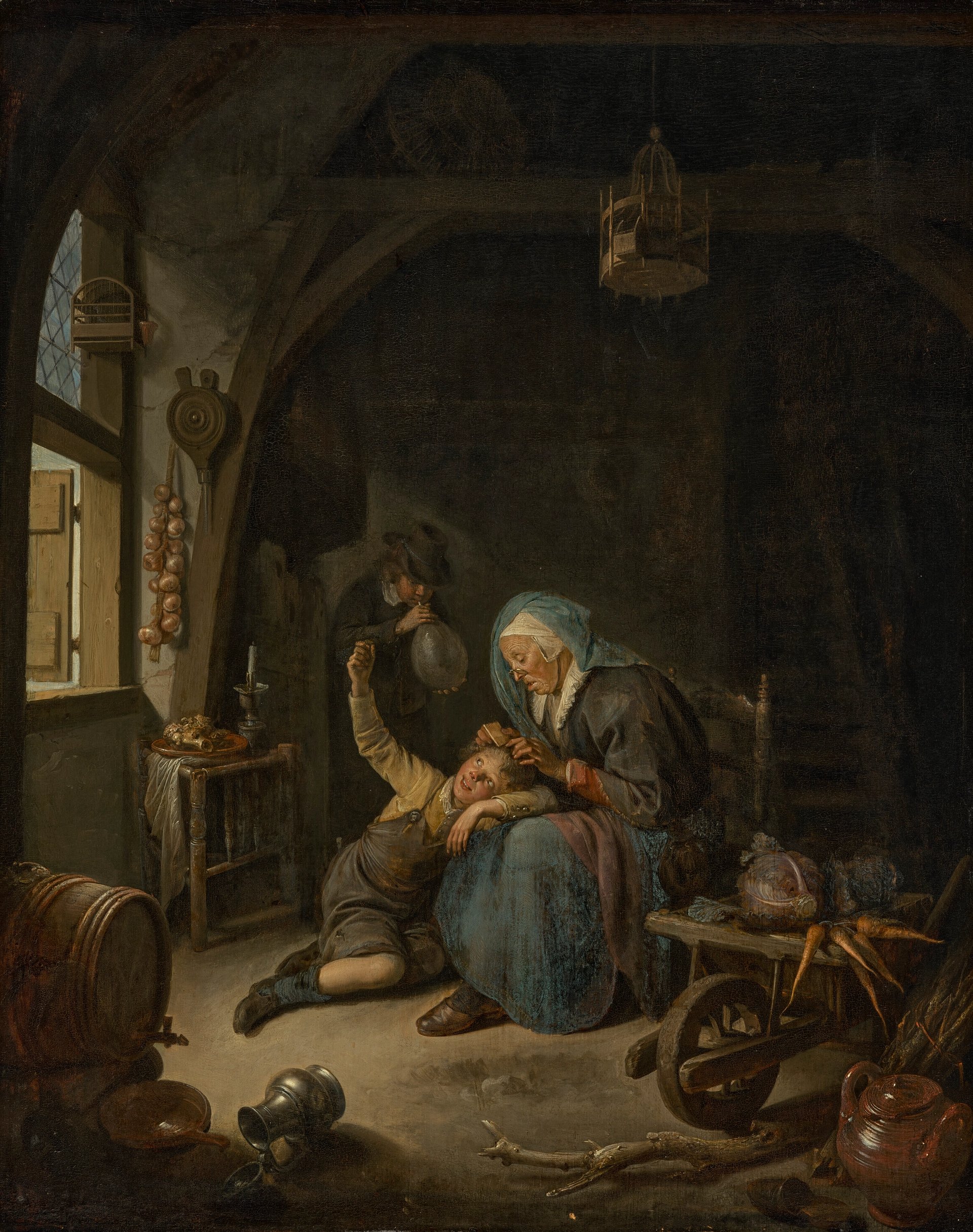
Gerrit Dou, A cottage interior with an old woman ('Rembrandt's Mother') delousing a boy's hair
Courtesy Christie's
More of a traditional Old Master was Gerrit Dou's A cottage interior with an old woman ('Rembrandt's Mother') delousing a boy's hair, a subject matter either relatable or repulsive, depending on your viewpoint. The Dutch Golden Age painter was Rembrandt's first pupil, and this work depicts a common subject in 17th century Dutch painting, that of a woman combing a child's hair.
"It was a fascinating, funny subject, of a woman de-nitting a little boy, and funnily enough it was that which either drew people to it or drew them away!" Fletcher says.
The Dou sold in the room for £1.7m (£2m with fees), above an estimate of £1m to £1.5m. In October 2023, during a series of sales featuring items from the Rothschild family collection, Christie's set an auction record for Dou when A young woman holding a hare with a boy at a window sold for $7m (with fees) to the Klesch Collection of 16th- and 17th-century European paintings.
This week's summer Old Master sales in London continue with Sotheby's evening sale tonight.


